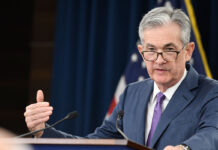In a move reflecting the complexities of the current economic landscape, the U.S. Federal Reserve decided to keep its key interest rates steady. This decision marks the fourth consecutive time the Federal Reserve has maintained its rates at a 22-year high, ranging between 5.25% and 5.5%. The decision aligns with the Federal Reserve’s ongoing efforts to manage inflation and economic growth.
The Federal Open Market Committee, at the conclusion of its two-day policy meeting, highlighted the uncertainty in the economic outlook, a factor influencing its decision to hold rates steady. This pause in rate adjustments comes amidst a backdrop of receding inflation and a robust economic performance. The Fed noted that the U.S. economy expanded at a strong pace in the third quarter, fueled by consumer spending and job growth.
Federal Reserve Chairman Jerome Powell, addressing the media, pointed out the challenges in gauging whether the financial conditions were tight enough to control inflation effectively. He acknowledged that while inflation has been on a downward trend, it remains above the Federal Reserve’s 2% target. Powell emphasized the need for a cautious approach, waiting to see how upcoming job and price data evolve before the next policy meeting.
The Fed’s actions are closely monitored by markets and investors, as they have implications for borrowing costs for households and businesses. For instance, the rise in Treasury bond yields and home mortgage rates affects the economy, with Powell specifically noting the impact of higher borrowing costs. This careful management of interest rates is part of the Fed’s broader strategy to ensure sustainable economic growth while keeping inflation in check.
The decision to keep rates unchanged has been met with mixed reactions from the financial markets. Some analysts and investors see it as a sign that the Fed might be nearing the end of its rate-hiking campaign, while others remain cautious, anticipating possible further hikes depending on future economic data.
Overall, the Federal Reserve’s recent policy decision underscores its ongoing commitment to balancing the goals of controlling inflation and supporting economic growth. The focus now shifts to upcoming employment and inflation data, which will play a crucial role in shaping the Fed’s policy decisions in the near future.












